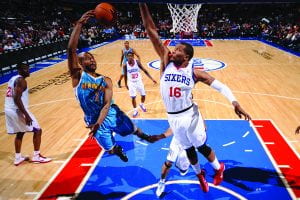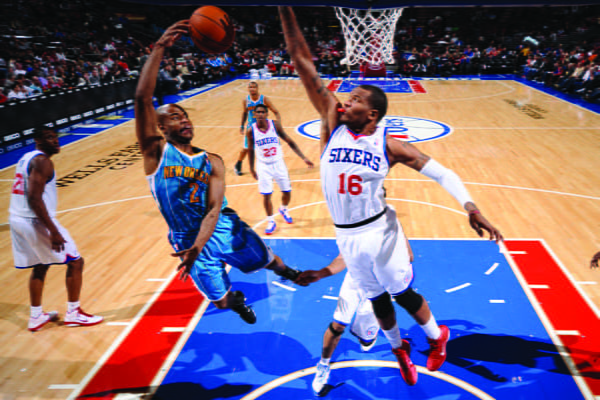BY ALEX MULHALL – STAFF WRITER
In 1990, the National Basketball Association (NBA) updated their Draft Lottery system, which gave the teams with the worst records a better chance at selecting the number one pick. The team with the worst record has a 25 percent chance of selecting the coveted number one ball, thereby ensuring a crack at selecting that franchise-altering player their fans and front office longed for. Lower level teams began “tanking” for draft prospects by trading away assets, acquiring picks, and losing as many games as they possibly could.
Unfortunately, tanking usually doesn’t work. Since 1990, only three teams with the worst record received the number one pick. Last year, the Cleveland Cavaliers selected the number 1 pick despite having only the ninth worst record in the league the season prior. They finished with 18 more wins than the last place Milwaukee Bucks, who only finished with a meager 15 wins.

Even if lottery odds always worked out in a teams favor, the draft selection process is dicey at best. A classic case of this occurred in 1984, when Michael Jordan, recognized by any rational basketball fan as the greatest player to ever play the game, went third overall behind Hakeem Olajuwon and Sam Bowie. Bowie, who attended the University of Kentucky, had a decent NBA career, but it was not anywhere close to what would be expected for the first overall pick.
There are many instances of these sorts of draft busts. Darko Milicic, Pervis Ellison, Kwame Brown, Adam Morrison and Michael Olowokandi are all players who had seemingly limitless potential, but, for one reason or another, could not string together a career’s worth of successful seasons in the NBA.
The problem with the NBA is that it is now nearly impossible for a team to win without a superstar-caliber, once-in-a-generation type talent on the floor every night. In the past ten years, there were few of those players. Since 2004, only five of the number one picks made meaningful impacts on their teams. Dwight Howard, Blake Griffin, John Wall, Kyrie Irving, and Anthony Davis are all remarkably talented individuals who are still worth their number one picks in hindsight.
The problem is, for every good number one pick over the past ten years, there is an equally terrible pick. Greg Oden went number one to the Portland Trailblazers in 2007, one pick ahead of reigning league MVP Kevin Durant. Anthony Bennett, the number one pick in 2013, set a record for lowest production rates for a number one pick. The Cavaliers only needed one season with him before they were ready to put him on the trading block.
Picks alone aren’t enough to guarantee any sort of success. “Put it all together, and you get hopes and dreams of greatness — but nothing remotely resembling assurances,” writes ESPN NBA writer Henry Abbott. “Any objective look through NBA history suggests that “the Thunder model” (of selecting high in the draft for long term success) is no model at all. Good luck with your tanking. If you get bad, you will get a high pick and you may even get a good player. But by far the most likely thing is that you’ll be tanking again long before you make it to the promised land, or even the conference finals.”
The problem with tanking is that it keeps bad teams bad. By the time a team’s high draft pick is ready to make a big impact, that player’s contract will be up, which means the team must choose how to spend their money in a way that can provide some longevity. Creating contenders in the NBA is a dicey, complicated process. It’s no surprise that in the past 20 years, only eight different franchises were able to put all the pieces together and win a championship.
Only time will tell if teams like the Philadelphia 76er’s will be able to put it all together and make a run for the Larry O’Brien trophy. For right now, however, their odds for a title look a lot worse than their odds for the number one pick.
